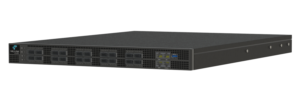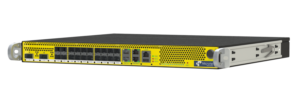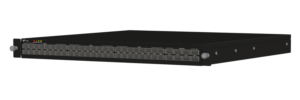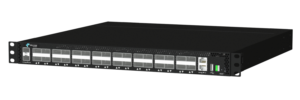
THE CHALLENGE
Mobile data traffic continues to grow at an exponential rate, driven by mobile video and OTT services. Also if 5G is going to be deployed in many Telecom Operators, existing LTE mobile networks still have a high burden to carry, and it will continue to grow.
Monitoring this high volume traffic is a problem for the operators: they need it for troubleshooting and also for granting the best user experience to their customers, but the data traffic is growing at so high speed that they are not able to cope with it.
Using probes with higher capacity or adding additional probes is a costly solution that not all Operators may afford. Looking at the problem from a different perspective, another solution is to reduce the User Plane traffic, and send to the monitoring tools only the data they really need for their tasks, without overrunning their capacity.
The GTP protocol in LTE Core networks
In 2G, 3G and 4G/LTE technologies, GTP protocol is used to carry mobile data across mobile networks, both control (GTP-C) and user plane (GTP-U) information.
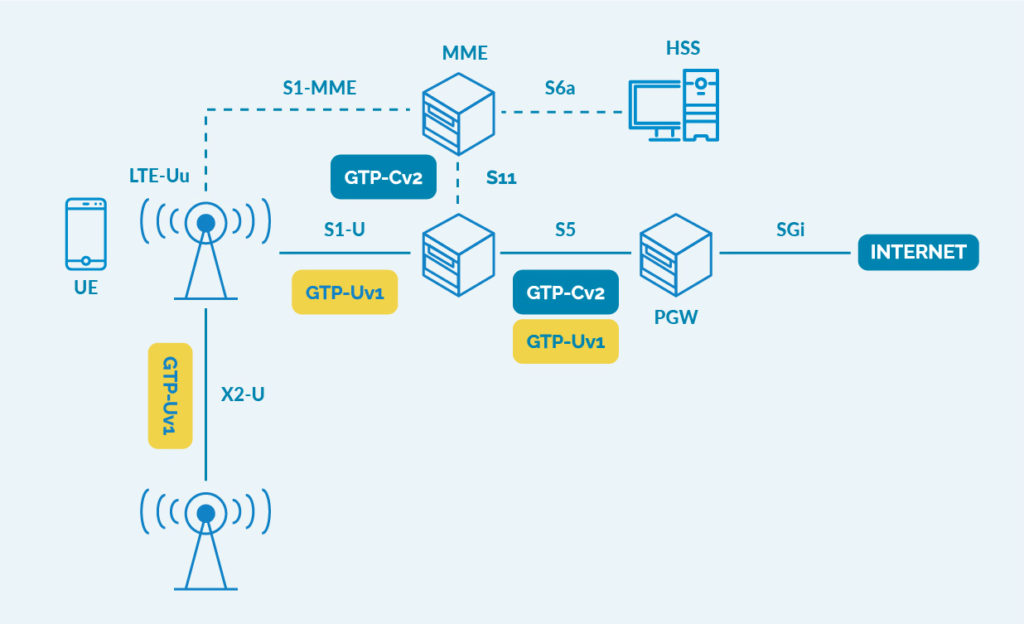
Fig. 1 GTP protocol in 4G networks
THE SOLUTION
A Network Packet Broker may be deployed to reduce the GTP User Plane traffic to be sent to the monitoring tools. Not all NPB may be used, since special capabilities, also very demanding from the computational point of view, are required to implement this task.
Main techniques to reduce the GTP User traffic are the following:
- GTP-U traffic reduction using Inner IP filtering
- GTP-U traffic reduction by filtering the data based on different GTP-C parameters, such as IMSI, IMEI, APN, … or based on the geographic area where the subscriber is.
1. GTP-U traffic reduction using Inner IP Filtering
Inner IP filtering can be deployed when the intent is to filter specific users’ traffic using their IPs, and send to the tools only part of the initial traffic.
It consists in doing the User Plane filtering based on the IP address of the device which started the communication, which is inside the GTP tunnel, hence it is also called ”Inner IP”.
Important to note, the Network Packet Broker to be used for this task has to provide the Inner IP filtering in hardware, to grant the needed performances.

Fig. 2 Inner IP in GTP frame (User IP=IP packet sent by the phone)
This technique can be effectively used in many Use Cases, represented in the table below.
| USE CASE | How | Notes |
|---|---|---|
| GTP User Plane traffic statistical sampling | Traffic is coherently reduced using inner IP filtering | In this case all traffic related to a specific inner IP is sent to the tools, but the number of inner IPs is sampled in order to reduce the traffic. Several reduction percentage may be configured, based on Operator specific needs |
| GTP User Plane traffic reduction by sending to the tools only the subscribers belonging to a specific list (IMSI - Inner IP dynamic correlation) | Use NPB Rest API to real time configure NPB Inner IP White List | Inner IP address is dynamic, can change in each PDP context message and is typically managed by the network itself. Operators which are able to real time trace the correlation between IMSI (unique identifier of the subscriber) and inner IP may real time configure NPB Inner IP White List using NPB REST API. |
| GTP User Plane traffic reduction by sending to the tools only the subscribers belonging to a specific list (IMSI - Inner IP static correlation) | Configure NPB Inner IP White List directly on the NPB | In some specific cases Inner IP and IMSI correlation does not change over the time. This is the case for example of mobile Set Top Box: they take advantage from the high bandwidth provided by LTE, maybe in an area where it is not easy to provide fibre connection to the home, but they are not moving. Connection is always on and IP address in this case usually does not change, depending on Operator policies. Operator usually have the list of Set Top Box inner IPs in their Data Base, so they can easily configure NPB to filter them. Also in this case REST API may be an interesting tool for the NPB to integrate with the Operator Data Base. |
Microtel Innovation Aster A-640 and Aster A-648 are the right solution for these Use Cases: they implement Inner IP Filtering in dedicated hardware, so there are no performance limitations regarding the load on the device and they may work full speed; moreover they make available powerful REST APIs for easy integration with Operators systems, where the correlation lists of IMSI and inner IP are elaborated.
Another advantage of this technique is that it does not need Control Plane information to work, so it can be used also in modern CUPS and 5G architectures, where GTP-C and GTP-U are deployed in different locations: in these cases traffic reduction based on inner IP is the most suitable solution to offload monitoring and security tools.
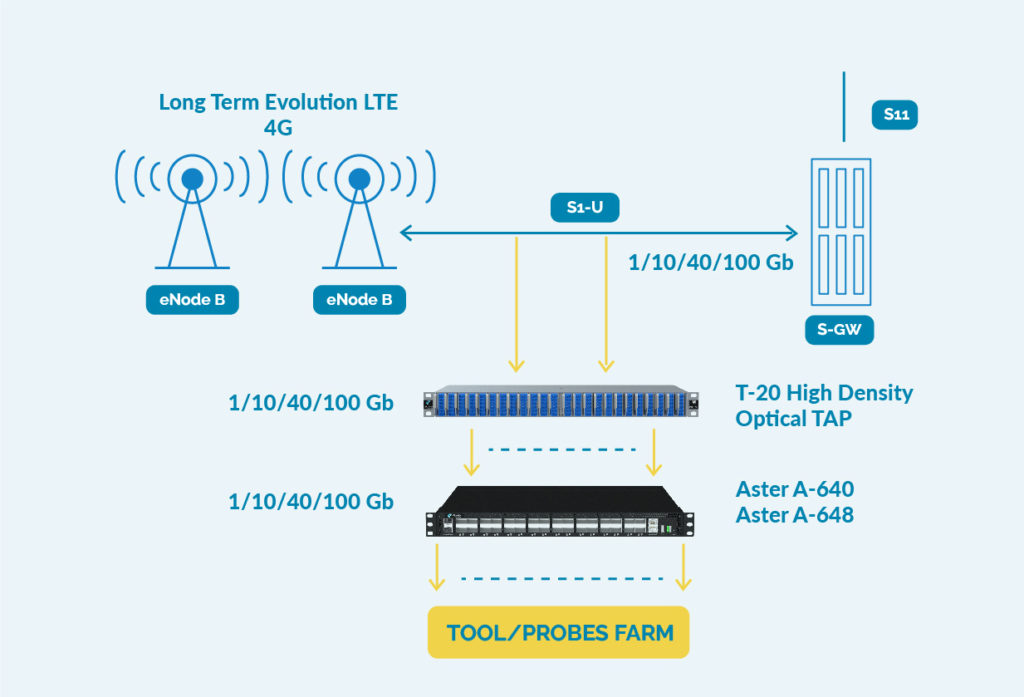
Fig. 3 Using Inner IP to filter S1-U (GTP User Plane)
2. GTP-U traffic reduction based on different GTP-C parameters
Another way to filter GTP User Plane is based on using GTP-C parameters, like mobile phone identifiers (IMSI, IMEI, APN, …) or geographical parameters, which identify the area where the mobile phone is.
The challenge in this case is that such parameters are included only in the control plane packets (GTP-C), not in the user plane (GTP-U), and since GTP-C and GTP-U data are available through different interfaces, the correlation between them is not an easy task to implement.
Microtel Innovation Aster XGB A-818 and A-820 and Aster A-XFE are the right products to be used in this case: they are powerful appliances capable to interface to GTP-C and GTP-U packets at all speed, ranging from 1G to 100 G, and to make the correlation between them, so assuring that all the data flows belonging to the same subscriber are recognized and put together for further elaboration.
After the correlation is done, it is easy for the Aster NPB to filter the User Plane traffic based on any parameter included in the GTP-C packets, since the device knows at which subscriber the user plane belongs.
With this technique many filters may be implemented:
| Type of filter | How it works |
|---|---|
| Mobile Phone IDs | |
| IMSI (International Mobile Subscriber Identity) | User and/or Control plane traffic generated by IMSIs which are listed in the White/Black Lists is forwarded to the tools or blocked |
| MSISDN (Mobile Station International Subscriber Directory Number) | User and/or Control plane traffic generated by MSISDNs which are listed in the White/Black Lists is forwarded to the tools or blocked |
| IMEI (International Mobile Equipment Identity) | User and/or Control plane traffic generated by IMEIs which are listed in the White/Black Lists is forwarded to the tools or blocked |
| Geographical location | |
| User Location Information: ULI-CGI, ULI-SAI, ULI-RAI, ULI-TAI, ULI-LAI, ULI-ECG | User and/or Control plane traffic coming from geographical areas identified by the ULI-CGI, ULI-SAI, ULI-RAI, ULI-TAI, ULI-LAI, ULI-ECG which are listed in the White/Black Lists is forwarded to the tools or blocked |
| Network type | |
| APN (Access Point Name) | User and/or Control plane traffic belonging to APNs which are listed in the White/Black Lists is forwarded to the tools or blocked |
| VoLTE (Voice over LTE) | User and/or Control plane traffic belonging to subscribers using VoLTE service is forwarded to the tools or blocked |
| RAT (Radio Access Technology) | User and/or Control plane traffic belonging to RATs which are listed in the White/Black Lists is forwarded to the tools or blocked |
| SER-NET (Serving Network) | User and/or Control plane traffic belonging to SER-NETs which are listed in the White/Black Lists is forwarded to the tools or blocked |
| QCI (QoS Class Identifier) | User and/or Control plane traffic which QCI is set with the values listed in the White/Black Lists is forwarded to the tools or blocked |
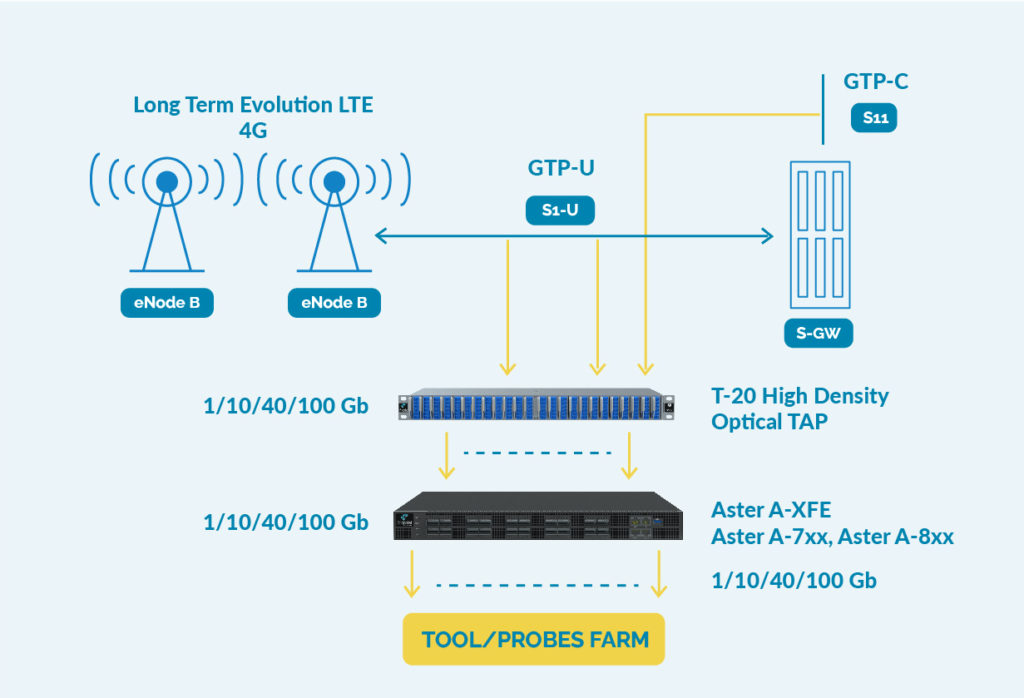
Fig.4 Using GTP-C parameters to filter GTP User Plane
As a summary, the solution to efficiently and cost-effectively reduce the GTP User Plan depends on Operator needs and Use Cases: in all situations Microtel Innovation Aster Network Packet Brokers are the right solution to solve the customer problem.
